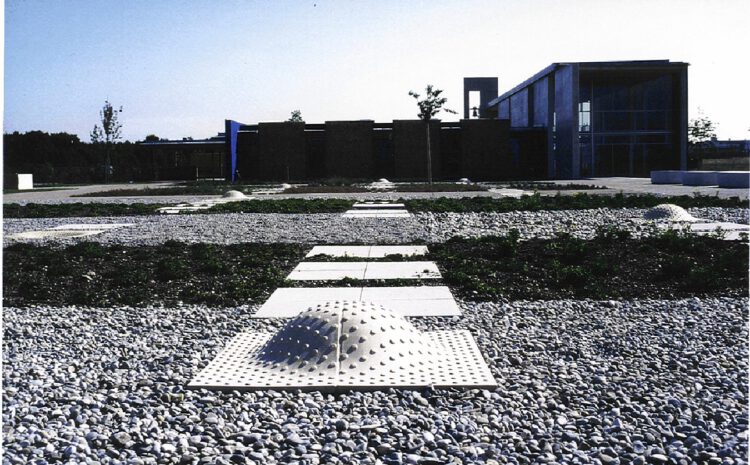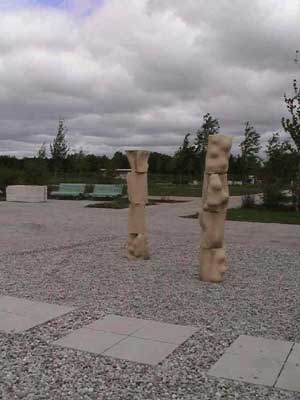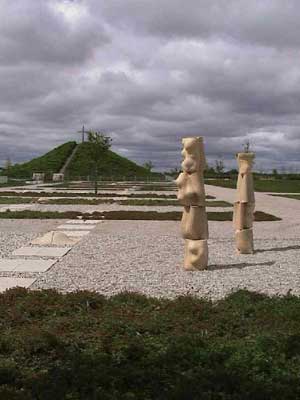
Meditation Garden
at the new cemetery in Neubiberg, 2000
The meditation garden is a contemporary offer for introspection, collection and meeting in remembrance of the dead. It is designed so that the architecturally protected structure accompanies the cemetery visitor back into the world as a basic pattern. The smell and appearance of medicinal herbs stimulate people to walk between the floor tiles that correspond to the architecture. These are accented at specific points by terracotta panels curving inward and outward. Modeled from baked earth, their surfaces stimulate touch and remind in shape of primordial structures I encountered on a trip into the microscope.
The journey into the microscope:
In the laboratory, images emerge that immediately bear little resemblance to structures we are familiar with and at the same time evoke memories of dream plexuses we encounter in REM. The further one travels on the SEM (scanning electron microscope) into these spaces hidden from the naked eye, the more intense the memory becomes.
As a motif for the spatial work I have chosen silicate forms, which since the Precambrian have been the basic constituent of clay-rich areas and whose visualization only became possible with the development of scanning electron microscopy.
After magnifying the single-celled organisms 5,000 times, the image tilts and formations appear that resemble large structures such as coral reefs. The aesthetic diversity and complex structure of these silicate forms impress people in the digital age. The desire to form these image sections three-dimensionally came to me when I looked at the SEM. The unfamiliar images that emerge at extreme magnifications represent complex systems of order, far removed from linear order, and offer a glimpse into the future of things. In the field of the meditation garden, memory and the present touch and meet.
Floating stela(l)s
 |
This spatial work consists of two freely modeled, four-part steles. *”floating” as the sound seems to be in frozen motion. It spreads out in the horizontal or vertical direction, as if it were still modelable, movable. Thus, “floating” embodies the state before and during the creation of a sculpture from clay. |
 |
|

